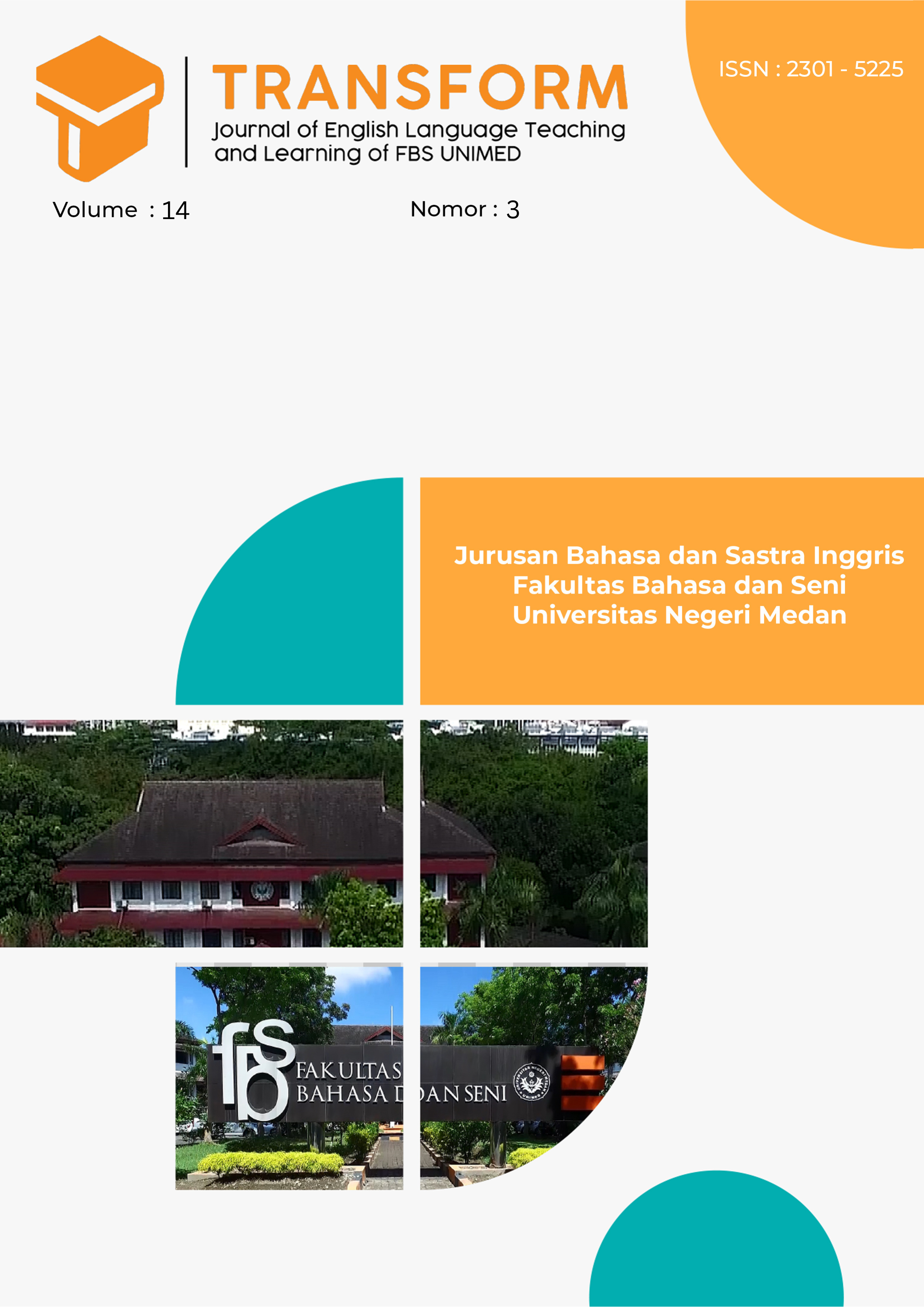Intertextuality in 2024 Indonesian Presidential Debate Memes on X
DOI:
https://doi.org/10.24114/tj.v14i3.68008Keywords:
Intertextuality, Meme, X, Presidential Candidate DebateAbstract
The advent of social media has led to changes in the way people communicate. One such change is in the usage of memes, especially among the younger generation. With Gen Z and Millennials making up over 50% of the voters in the 2024 Indonesian presidential election, memes became one way they voiced their opinions on the televised debates held prior to the election. This research aimed to find out how intertextuality impacted the meaning of political memes about the 2024 Indonesian presidential candidate debates. This research employed the qualitative method. The critical discourse analysis by Fairclough was used to analyze the data. The memes were limited only to those that referenced works of literature that were uploaded on the social media platform X on the day of or the day after the first, third, and fifth presidential debates. The findings indicated that intertextuality in memes added a layer of complexity and nuance that allowed the creators to criticize the candidates implicitly through humor, thus circumventing censorship and IET laws. The memes functioned as a mode of political advocacy and public discussion, mainly in the form of criticism of the candidates’ actions during the debates. Criticism of the first and third debates likely contributed to the calmer proceedings of the final debate.References
Aminulloh, A., Qorib, F., Fianto, L., & Setiamandani, E. D. (2022). Propaganda and Political Memes on Social Media in the 2019 Indonesian Presidential Election. Journal of Islamic World and Politics, 6(2). https://doi.org/10.18196/jiwp.v6i2.16115
Bates, L., Christensen, P. E., Nakov, P., & Gurevych, I. (2023, November 11). A Template Is All You Meme. Cornell University. https://doi.org/https://doi.org/10.48550/arXiv.2311.06649
Chłopicki, W., & Brzozowska, D. (2021). Sophisticated humor against COVID-19: The Polish case. Humor, 34(2). https://doi.org/10.1515/humor-2021-0015
Gearhart, S., Zhang, B., Perlmutter, D. D., & Lazić, G. (2020). Visual Intertextuality Theory: Exploring Political Communication and Visual Intertextuality through Meme Wars. In S. Josephson, J. D. Kelly, & K. Smith (Eds.), Handbook of Visual Communication: Theory, Methods, and Media (2nd ed., pp. 367–379). Routledge.
Kompas. (2023, November 28). Demografi Pemilih 2024. Kompas. https://www.kompas.id/baca/opini/2023/11/27/demografi-pemilih-2024
Kompas. (2024, February 2). KPU: Debat Pertama hingga Keempat Menjangkau 394 Juta Penonton TV. Kompas. https://nasional.kompas.com/read/2024/02/02/19183401/kpu-debat-pertama-hingga-keempat-menjangkau-394-juta-penonton-tv
Kulkarni, A. (2017). Internet meme and Political Discourse: A study on the impact of internet meme as a tool in communicating political satire. Journal of Content, Community & Communication, 6, 13–17. https://doi.org/10.2139/ssrn.3501366
Lin, C.-C., Huang, Y.-C., & Hsu, J. Y. (2014). Crowdsourced Explanations for Humorous Internet Memes Based on Linguistic Theories. Proceedings of the Second AAAI Conference on Human Computation and Crowdsourcing (HCOMP 2014), 143–150.
Mahadian, A. B., & Hashim, R. (2022). Political Internet Memes in Indonesia: Insulting the President in the 2019 Presidential Election. Journal of Contemporary Issues in Media and Communication, 2, 27–57.
Miles, M. B., Huberman, A. M., & Saldaña, J. (2014). Qualitative Data Analysis: A Methods Sourcebook (3rd ed.). SAGE Publications, Inc.
Rahardi, H. R., & Amalia, R. M. (2019). Meme as Political Criticism towards 2019 Indonesian General Election: A Critical Discourse Analysis. Studies in English Language and Education, 6(2), 239–250. https://doi.org/10.24815/siele.v6i2.14020
Shifman, L. (2014). Memes in Digital Culture. The MIT Press.
Zenner, E., & Geeraerts, D. (2018). One does not simply process memes: Image macros as multimodal constructions. In E. Winter-Froemel & V. Thaler (Eds.), Cultures and Traditions of Wordplay and Wordplay Research (pp. 167–193). De Gruyter.
Downloads
Published
How to Cite
Issue
Section
License
Copyright (c) 2025 Odytyas Fanni Anggraheni Dewanti Valkenburg, Bima Prana Chitra, Emmy Erwina

This work is licensed under a Creative Commons Attribution-ShareAlike 4.0 International License.
Authors who publish with this journal agree with the following terms:
- Authors retain copyright and grant the journal right of first publication with the work simultaneously licensed under a Creative Commons Attribution License that allows others to share the work with an acknowledgment of the work's authorship and initial publication in this journal.
- Authors are able to enter into separate, additional contractual arrangements for the non-exclusive distribution of the journal's published version of the work (e.g., post it to an institutional repository or publish it in a book), with an acknowledgment of its initial publication in this journal.
- Authors are permitted and encouraged to post their work online (e.g., in institutional repositories or on their website) prior to and during the submission process, as it can lead to productive exchanges, as well as earlier and greater citation of published work (See The Effect of Open Access).
- This work is licensed under a Creative Commons Attribution-ShareAlike 4.0 International License.








